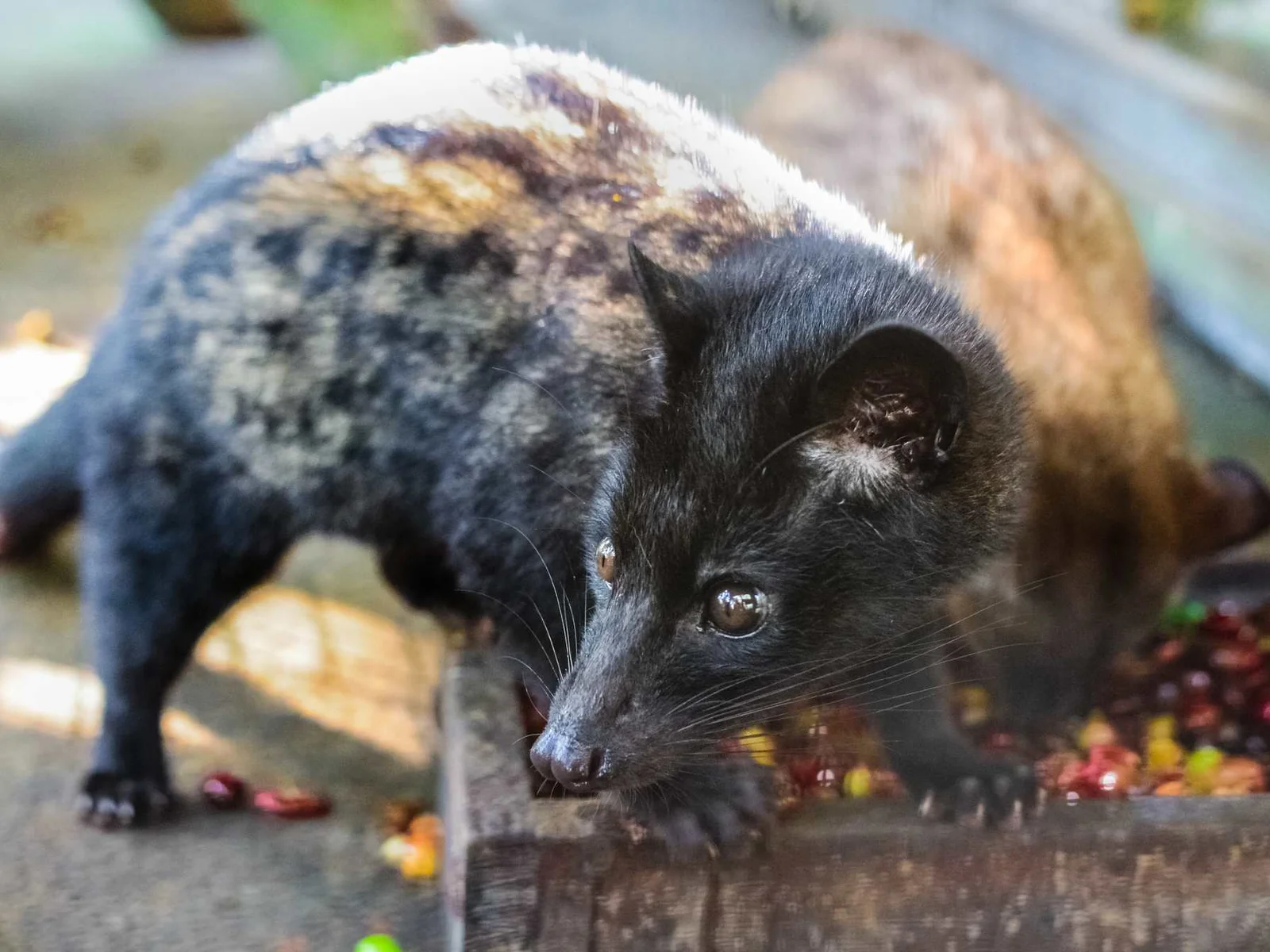#

#
By Dr. Desak Ketut Tristiana Sukmadewi, S.Si., M.Si
March 23, 2025
Indonesia’s Sustainable Development Goals in the Limitation and Monitoring of Illegal Wildlife Trade
Indonesia is committed to achieving the Sustainable Development Goals (SDG) by 2030, including ending the trade in protected species and addressing the demand and supply of illegal wildlife. Therefore, long-term data on wildlife trade and its contribution to the broader economy is required. This research began with a long-term monitoring program of live civet trade in wildlife markets (120 surveys, 2010–2023). Civets are traded as exotic pets and for the production of civet coffee, and serve as a proxy for other well-known wildlife species. We recorded 2,289 civets from six species, including those with strict regulations. Although this trade is illegal and contradicts Indonesia’s SDG commitments, it has remained stable over time in terms of quantity, species, and prices.
Illegal Wildlife Trade
Illegal and/or unsustainable wildlife trade in Indonesia is widespread and poses a threat to the survival of various species (Bouhuys, 2019; Chng et al., 2015; Eaton et al., 2015; Harris). Domestic wildlife trade is poorly regulated, with wildlife being illegally hunted and openly sold in wildlife markets across major cities (e.g., Harris et al., 2015). Furthermore, online platforms have become a key channel for illegal wildlife trade (e.g., Thomas et al., 2021). Illegal Civet Trade.The illegal trade of civets reflects the practices involved in the trade of many other species in Indonesia. Harvest quotas and trade regulations set each year are often ignored, policies and laws are poorly enforced, and illegal trade occurs openly without regard for authorities. Although the number of civets in the market appeared stable during this study period, it is likely that local populations have declined due to the expansion of hunting areas. Further research is needed to understand the impact of this trade on wild populations. Forensic studies, such as DNA, hair, or isotope analysis, can help determine geographic origin and/or prove captive breeding. To enable Indonesia to meet its SDG obligations as outlined in the National SDG Roadmap (MNDP, 2020), increased efforts are needed to curb illegal civet trade.
Civet Prices in the Market
Civets are traded openly in wildlife markets, allowing for the collection of trade data without undercover techniques. Surveyors walked slowly through the markets, recording the number and species on mobile phones or notebooks after leaving the markets. We recorded species and age categories (baby, juvenile, adult) when possible, and opportunistically took photos. Baby civets were often not weaned and sometimes still had their eyes closed, indicating they were taken directly from nests. We never observed babies with their mothers nursing, indicating they were not from captive breeding. Adult civets were easier to identify when clearly visible. We collected the initial prices of civets in the market. These prices could decrease after bargaining or if more than one animal was purchased at once. Prices were gathered in IDR and corrected for inflation until July 2023, then converted to USD (IDR 100,000 equals US$6.53).
Data on civet turnover from January to July 2019 was obtained from Lewis-Whelan et al. (2023). The lower estimate showed 33% of civets sold within a week, while the higher estimate indicated that 100% were sold within 10 days. We assumed these estimates applied throughout the study period and in two other markets. The average interval between consecutive surveys in three main markets was 18.3 ± 2.4 weeks, with the shortest interval being 3 weeks.
Indonesia’s Commitment to Curbing Illegal Wildlife Trade
Although Indonesia’s commitment to the SDGs aims to curb the trade in protected species, reduce the flow of illicit finances, and combat organized crime, this commitment does not specifically mention particular taxonomic groups (MNDP, 2020). The main focus is usually on well-known species such as tigers (Panthera tigris), orangutans (Pongo spp.), Sunda pangolins (Manis javanica), and several species of songbirds (Adhiasto et al., 2023; Harris et al., 2015; Leupen et al., 2020; Nijman et al., 2021; Sherman et al., 2022; Sykes, 2017).
Although the civet trade in Indonesia is tightly regulated (Lewis-Whelan et al., 2023; Shepherd, 2008; Soehartono & Mardiastuti, 2002), and most species are only allowed to be traded in limited quantities, we found many civets being sold freely. There were significant differences in the number, age composition, and selling prices of civets in Jakarta, Bandung, and Denpasar, which did not support the initial hypothesis that these markets would have similar trade characteristics.
Legal Provisions and Oversight
Legal provisions and government oversight regarding illegal wildlife trade must be strengthened. The government is advised to enforce the law more strictly and enhance legislation to support the SDGs and halt the illegal trade of protected species in Indonesia. The quota system should be critically examined, as it has been recommended for decades to be implemented more efficiently and based on quantitative, science-driven data (Shepherd, 2008; Soehartono & Mardiastuti, 2002). At the provincial level, an evaluation is needed regarding the location and number of civets allowed to be harvested, and how this reflects in the trade. For example, civet trade in Bali should not occur as no harvest is allowed in the province. At the national level, there needs to be a more transparent quota system that ensures unused quotas in one province are not transferred to another province.
Forensic studies can play a role in providing evidence of the origins of traded wildlife. Therefore, we encourage the authorities in Indonesia to ensure effective quota implementation and take strong action against traders who violate national policies and laws. Furthermore, we recommend permanently closing wildlife markets that serve as hubs for illegal trade.
Based on Research by:
Vincent Nijman, Abdullah Abdullah, Desak Ketut Tristiana Sukmadewi, et al.
Krediti Foto: AKKHARA JARUSILAWONG
